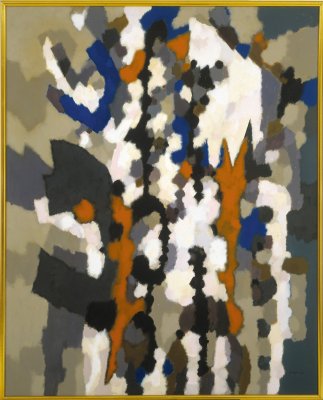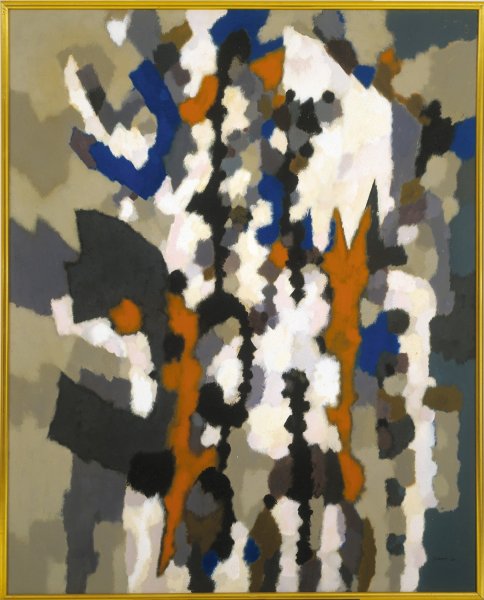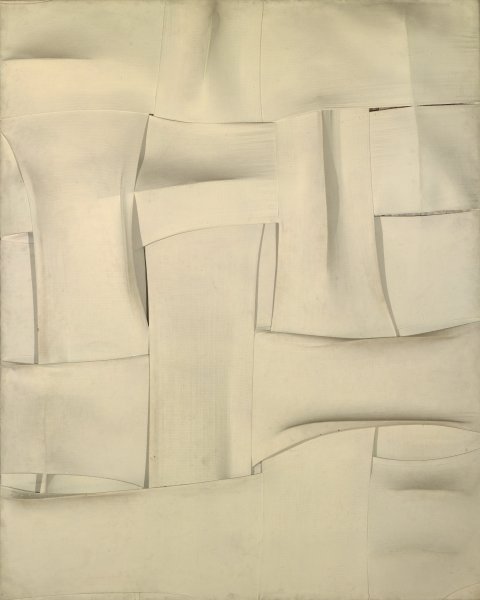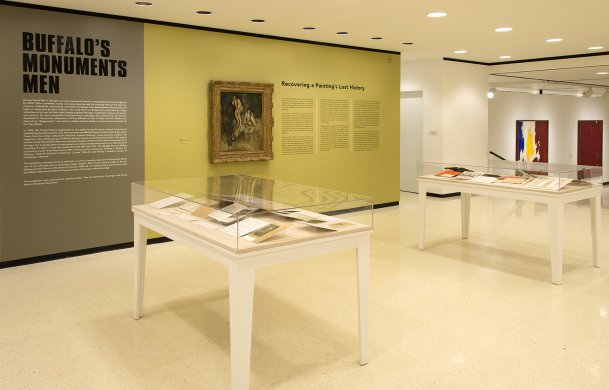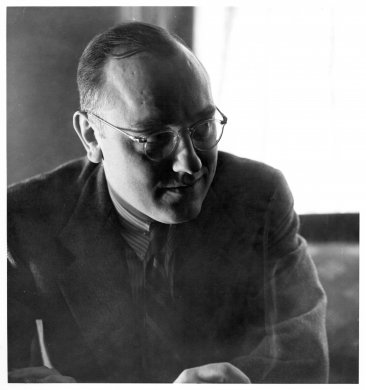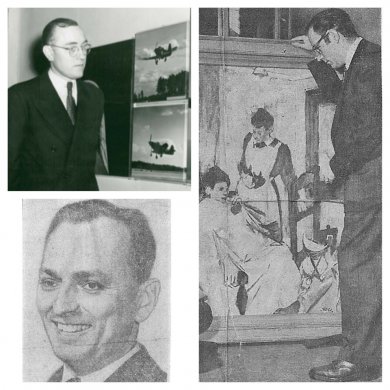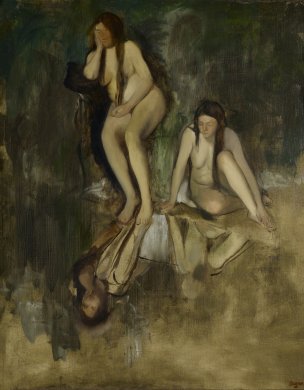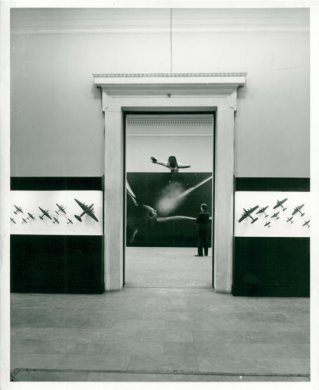Several artists in the collection of the Albright-Knox Art Gallery served in the Monuments, Fine Arts, and Archives Section (MFAA) of the United States Armed Forces. Often referred to as the Monuments Men, this group of men and women from several nations contributed their expertise as museum directors, curators, art scholars and educators, artists, architects, and archivists to the fight for humanity. These three men included Louis Dlugosz (American, 1915–2002), William Gear (British, 1915–1997), and Salvatore C. Scarpitta, Jr. (American, 1919–2007).
Louis Dlugosz, a sculptor and steelworker, was born in Lackawanna, New York in 1915. The Western New York native started working at Bethlehem Steel Company at the age of 19. It was here that he created the technique predominantly seen in his artworks, called “form assembly” or “pretzel-bending.” The technique emphasized only the important features of the subject of the artwork. In 1940, Dlugosz won first prize at the Annual Exhibition by Artists of Western New York at the Albright Art Gallery and had a one-man show at a gallery in New York City. That same year, he enlisted in the US Army to serve during the Second World War, where he designed scale models of Normandy beaches in preparation for D-Day. After the war ended, he served with the MFAA to assess damage to monuments in Europe. A few years later, he returned to Buffalo, attended the Buffalo Art Institute, and returned to his job at Bethlehem Steel where he remained until his retirement. He died in 2002 on a trip to Poland. His work has been exhibited at the Metropolitan Museum of Art in New York City, the Beaux-Arts School, and the Louvre
William Gear, an abstract painter, teacher, curator and administrator, was born in Methil in the south-east region of Fife, Scotland in 1915. He studied at Edinburgh College of Art before traveling to Paris to study with the French artist Fernand Léger. During the Second World War, he served in the Royal Signal Corps in Europe and the Middle East. Known to be an artist, he was given a position in the MFAA after his active service. While serving an officer in the Monuments Men, he oversaw the recovery and return of artworks from the Berlin Art Collections, arranged a series of modern art exhibitions in order to promote the work of avant-garde German artists, and was part of a committee to design a memorial for the Bergen-Belsen concentration camp. After his MFAA service, he moved to Paris became a member of the avant-garde Cobra art movement in 1948 and exhibited his paintings. From 1958 to 1964, Gear was curator of the Towner Art Gallery in Eastbourne, England and from 1964 to 1975, he was head of the Faculty of Fine Art at Birmingham College of Art. In 1997, he was awarded the Leporello Prize by the Lower Saxony government for his work with the MFAA. He died that same year.
Salvatore C. Scarpitta, Jr., an avant-garde sculptor, teacher and art critic, was born in New York in 1919 and raised in California. He is the son of the famed Italian architect and sculptor Salvatore C. Scarpitta. He moved to Italy at the age of 17 and a few years later began studying at the Italian Academy of Arts. When Italy and the United States declared war in late 1941, Scarpitta was put under surveillance because he was an American citizen. He spent nearly eighteen months at an internment camp before he made his escape. After almost a full year of living in hiding, he traveled into Germany and joined the United States Navy. During active service, he worked as an interpreter and interrogator of prisoners of war. Through his father’s connections, he became part of the MFAA. His duties with the Monuments Men included traveling to various hidden repositories across Italy in order to locate, catalogue, and photograph looted artworks and assist in their return. After his MFAA service, he was admitted to the American Academy in Rome, eventually moved back to the United States, and had a very successful career as an artist. His artworks ranged from three-dimensional wrapped canvases to sculptural renderings of cars and sleds. In addition to his work as an artist, Scarpitta was also a critic and taught at the School of Visual Arts in New York and Harvard University. His work has been shown at the Albright-Knox Art Gallery and several international art museums. He died in New York in 2007.
